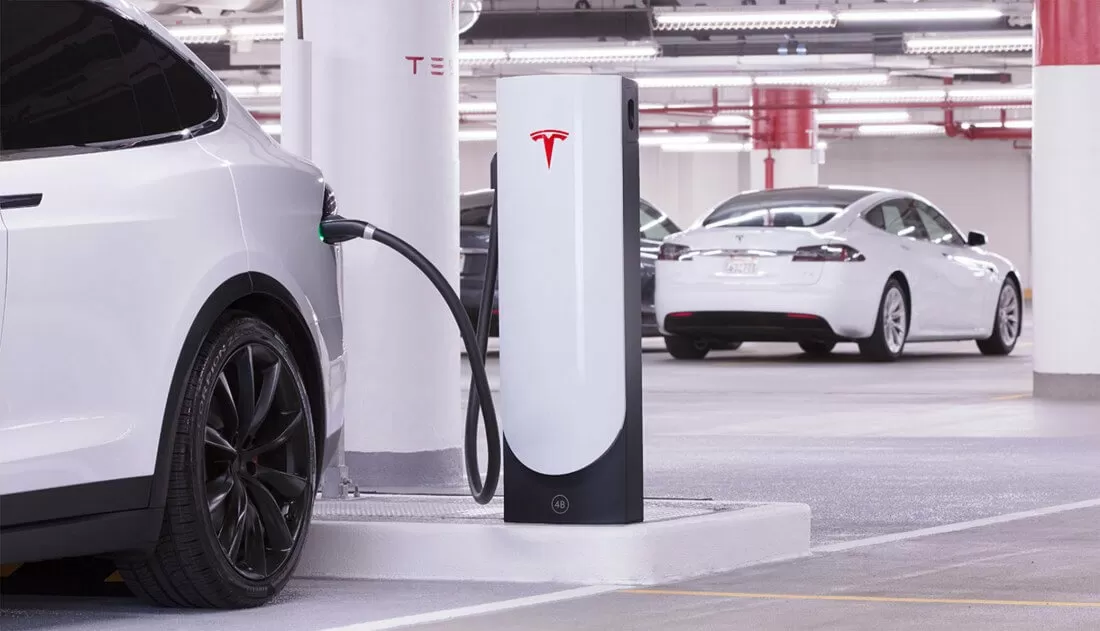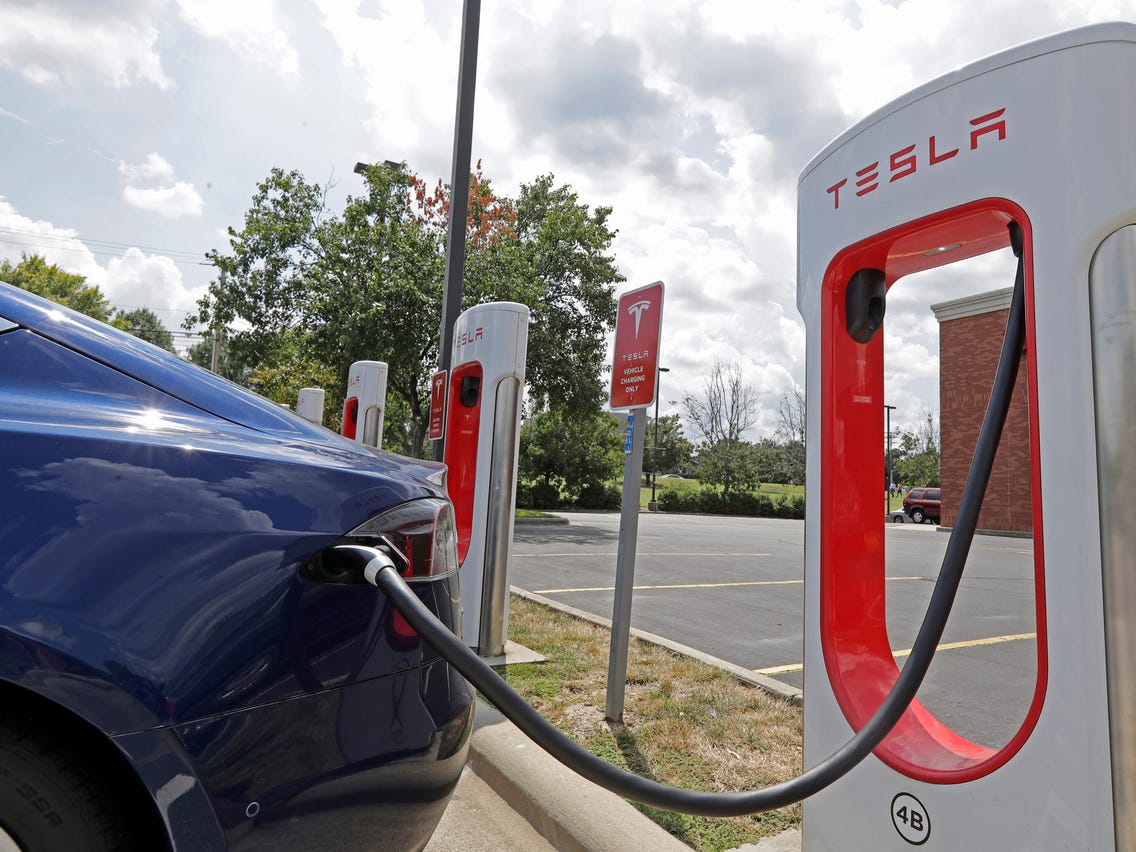Owning a Tesla is akin to having a piece of the future today. The seamless blend of technology, design, and sustainable energy makes every drive an experience, a testament to humanity’s strides in engineering. But like every avant-garde product from any automaker, with the excitement comes the responsibility of understanding its nuances. One key aspect, often filled with numerous queries for new Tesla owners, is charging. How do you charge a Tesla? How long does it take? Which Tesla charging stations are available? This guide addresses these questions, ensuring you utilize your Tesla to its optimal capacity.
Tesla Charging Interface Vs. Other Brands
The Tesla Connector
Tesla’s proprietary charging connector is an embodiment of elegance and functionality. A sleek design that is easy to handle ensures an efficient power transfer to the vehicle. While the connector design remains consistent across many regions, Tesla recognizes the diverse electric standards across countries. As a result, in areas like Europe, a modified version known as the Mennekes is used. To cater to various global standards, Tesla also offers a plethora of adaptors, ensuring that no matter where you are, charging your Tesla remains hassle-free.
Charging Speed And Power
Tesla’s Superchargers, hailed for speed, are leagues ahead of many traditional charging solutions. While a regular electric vehicle (EV) charger might take several hours to charge a vehicle fully, Tesla’s V3 Superchargers, their fastest charging option, can provide up to 200 miles of range in just 15 minutes. This capability underscores Tesla’s commitment to convenience and makes long-distance EV travel feasible.
Compatibility With Non-Tesla Chargers
Tesla’s adaptability is one of its many strengths. With the suitable adaptor, Tesla vehicles can be charged at most third-party stations with compatible chargers. This flexibility ensures Tesla owners aren’t strictly bound to brand-specific charging points. However, using third-party stations may come with varied charging speeds and might not harness the full rapid-charge potential inherent to Tesla Superchargers.
Using Public And Private Charging Stations For Tesla
Public Charging: Superchargers
Navigating to the nearest Tesla Supercharger is a breeze with Tesla’s in-car navigation system or the mobile app, which provides real-time availability and station health. Once at the station, plug in the connector, and your Tesla will start charging. The car’s display showcases the charging progress, and once done, you unplug and go. Tesla has streamlined the payment process by linking credit cards to user accounts, making automatic deductions once charging is complete.
Public Charging: Third-Party Stations
Charging a Tesla at third-party charging stations usually requires an adaptor, which easily fits onto the Tesla connector. With a myriad of third-party charging networks available, it’s crucial to understand their payment structures. Some might need prior memberships, while others operate with pay-as-you-go systems. Always ensure compatibility and maximum charging speed before relying on third-party networks for long trips.
Home Charging
The convenience of waking up to a fully charged Tesla can’t be overstated. Setting up a home charging station, which brings the benefit of charging to homeowners, requires the Tesla Wall Connector – an efficient equipment tailored for daily use. Once installed, the setting is as simple as plugging in your vehicle overnight. However, safety is paramount. Ensure the charging area is dry, regularly inspect for cable wear and tear, and rely on qualified electricians for any charging equipment installations or checks.
Environmental Benefits
One of the cornerstones of Tesla’s vision is a commitment to sustainability, and charging a Tesla ties directly into this vision. By opting for electric power over traditional fossil fuels, Tesla owners are actively reducing their carbon footprint, contributing to cleaner air and a healthier planet.
Electric vehicles (EVs) substantially decrease greenhouse gas emissions, especially when charged with renewable energy sources. A Tesla, charged with solar or wind power, represents a shift towards true sustainability. Owners need to remember that beyond the immediate benefits of EVs, like low charging costs and vehicle performance, there lies a broader global help.
In numerous areas, renewable energy sources are being integrated into the power grid, which means the environmental benefits of driving a Tesla are continually growing. By supporting renewable energy and furthering the adoption of electric vehicles, Tesla owners are not just passengers but active participants in the global transition towards sustainable transportation.
Moreover, Tesla’s ongoing research into battery technology and renewable energy solutions, such as the Tesla Powerwall, is shaping a future where homes and cars are interconnected in a sustainable ecosystem. As Tesla owners, you are pioneers of this future, leading the charge metaphorically and literally.
Furthermore, the decrease in noise pollution in urban areas, thanks to silent electric vehicles like Tesla, contributes to more serene city environments. A quiet drive enhances the driver’s experience and makes our cities more peaceful and pleasant.
Every time you charge your Tesla, you’re not only fueling your vehicle but also fueling a movement towards a greener, cleaner world. Each charge reaffirms a commitment to a sustainable future, a testament to the positive change one individual – and one car – can bring about.
Best Practices For Charging A Tesla
Optimizing Battery Life
Charging a Tesla is not just about plugging in and filling up at a network charging station or home; it’s a science that, when mastered, ensures the longevity and efficiency of your car’s battery. Charging your Tesla to about 80-90% is generally recommended for daily usage. Doing so promotes optimal battery health and ensures its long-lasting performance. Charging to 100% is often reserved for lengthy trips where maximum range is essential. If you’re storing your Tesla for extended periods, aiming for a 50% charge is advisable. Another notable feature is the “Range Mode”. When activated, this mode limits the energy the climate control uses, marginally boosting the available driving range. However, it’s essential to understand that regularly using your Tesla in this mode might put additional strain on specific components.
Seasonal Charging Tips
Tesla cars are marvels of technology, but they aren’t immune to the laws of physics. Batteries, in general, can be temperamental with extreme temperatures. In colder climates, you notice a reduced range. It’s because batteries don’t discharge as efficiently in cold temperatures. A helpful tip for winter charging is to precondition your Tesla while it’s still plugged in.
You warm up the battery before driving, optimizing its range and performance. Similarly, in the summer, parking in the shade or sunshades can reduce the cabin temperature, meaning less energy is spent on cooling, leading to better charging efficiency.
Safety Precautions
Safety first is not just a phrase; it’s a mantra every Tesla owner should adopt, especially while charging. Regardless of the charging method you use, first and foremost, always ensure that the charging environment is dry. Electrocution risks rise significantly in wet conditions. It’s also wise to keep the charging area clear of flammable materials. While Tesla’s charging systems are built with numerous safety measures, it’s always good to be cautious. Regularly inspect your charging cables for any wear or tear. Any exposed wires or damages to the connector should be addressed immediately. Lastly, periodic checks by a qualified electrician for home charging setups can go a long way in ensuring safety and efficiency.
Understanding The Costs Of Charging Your Tesla
Charging your Tesla isn’t just about convenience and battery health; it also involves understanding the financial implications. The cost of charging a Tesla varies based on numerous factors, including location, electricity rates, and the type of charger used. At home, your expense is typically tied to your local electricity rates. Some homeowners use off-peak hours, where electricity might be cheaper, to charge their Teslas. While fast and efficient, supercharging stations come with their own cost structure. Tesla sometimes offers free Supercharging miles or reduced rates depending on your model and region. Using third-party stations might have varied cost implications, and reviewing their pricing models is essential. Some areas also provide incentives or rebates for electric vehicle charging, which can help offset the costs. By being informed and strategic about where and when you charge, you can optimize your car’s battery and make the most cost-effective decisions.
Conclusion
Charging a Tesla is an easy process, but with a bit of knowledge, it becomes an art. Understanding the nuances, adopting best practices, and being safety-conscious can elevate your Tesla experience. It’s not just about how to charge a Tesla or how long it takes; it’s about how you can make each charge count, ensuring longevity, efficiency, and safety. For every new Tesla owner reading this, remember you’re not just driving a car but part of a revolution. And to all the seasoned Tesla drivers, we urge you to share your wisdom, tips, and experiences. Together, we drive into a greener, brighter future.
Post time: Nov-10-2023

 Portable EV Charger
Portable EV Charger Home EV Wallbox
Home EV Wallbox DC Charger Station
DC Charger Station EV Charging Module
EV Charging Module NACS&CCS1&CCS2
NACS&CCS1&CCS2 EV Accessories
EV Accessories


